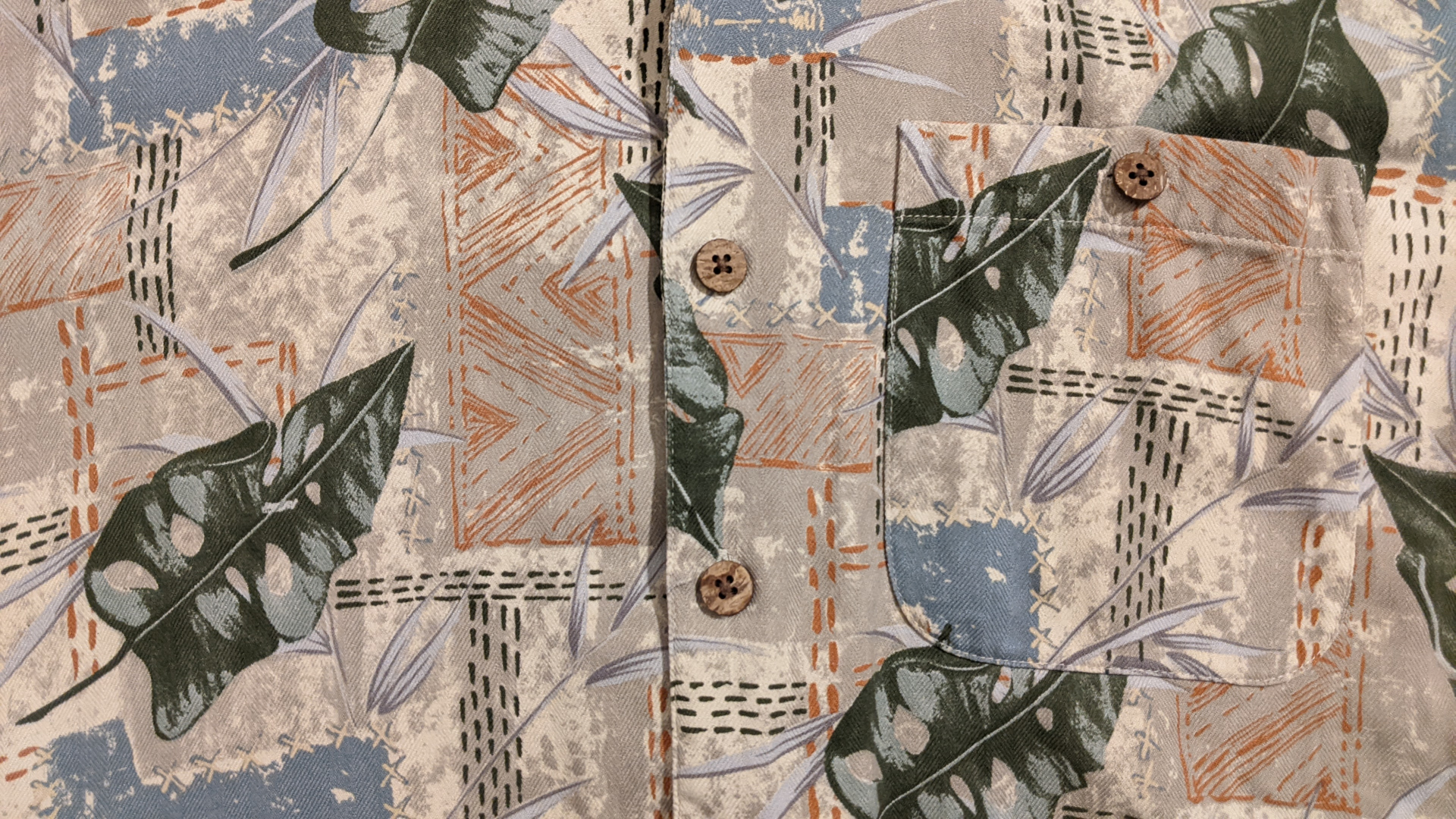February 7, 2023
I Studied Plants for a Week
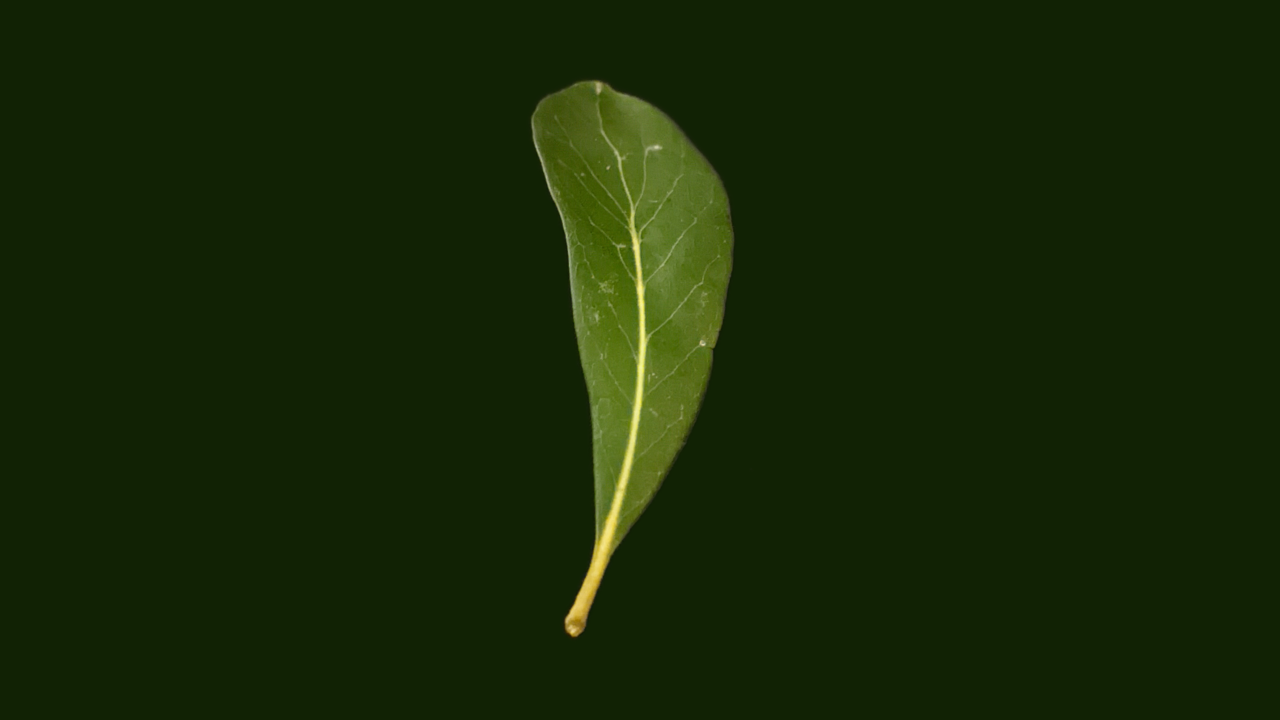
Turns out the topic of “plant” is a pretty big one. I spent half of my time researching plants in general, then the other half outside observing and trying to identify them. There was an interesting dichotomy between the two where the time spent researching got me into a bunch of tangents since there's so much to learn about the thousands of different plant species, but when I actually went outside 60% of the trees in Austin were the exact same Live Oak copy and pasted.
To keep things interesting, this was the week when Texas decided to have its “once in a lifetime” (every couple of years) ice storm. Hundreds of pounds of ice collected on each tree, meaning trees were lucky if they didn’t have at least 1 branch snap off. The storm took down my power for a few days making it difficult to research things, but on the plus side it made the outside environment more interesting to observe.
The Needly Tree With Little Cones

This was the first plant I was really drawn towards identifying. Unlike all the boring oak trees, this tree had needles and cones, which seemed ~exotic~ to someone who’s lived in the southern US his entire life. Of course, once I noticed one of these trees I noticed they were the second most common tree and basically all over the place.
I noticed a couple interesting things about these trees in relation to the ice storm. For one, I noticed their leaves and branches had thinner layers of ice than the oak trees, which were more ice than tree at that point.
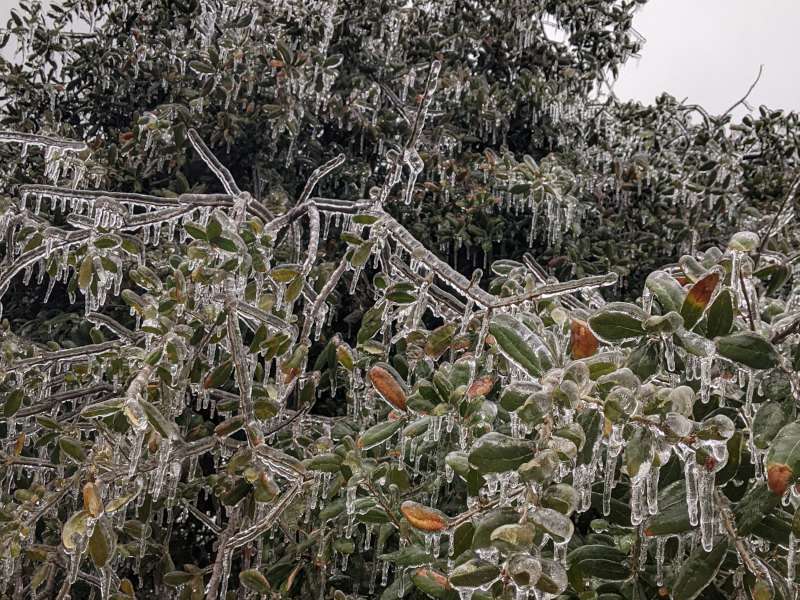
I also found one of these needly trees that had split open from the ice weighing it down, so I got to see what it looked like inside and smell it. It smelled good.
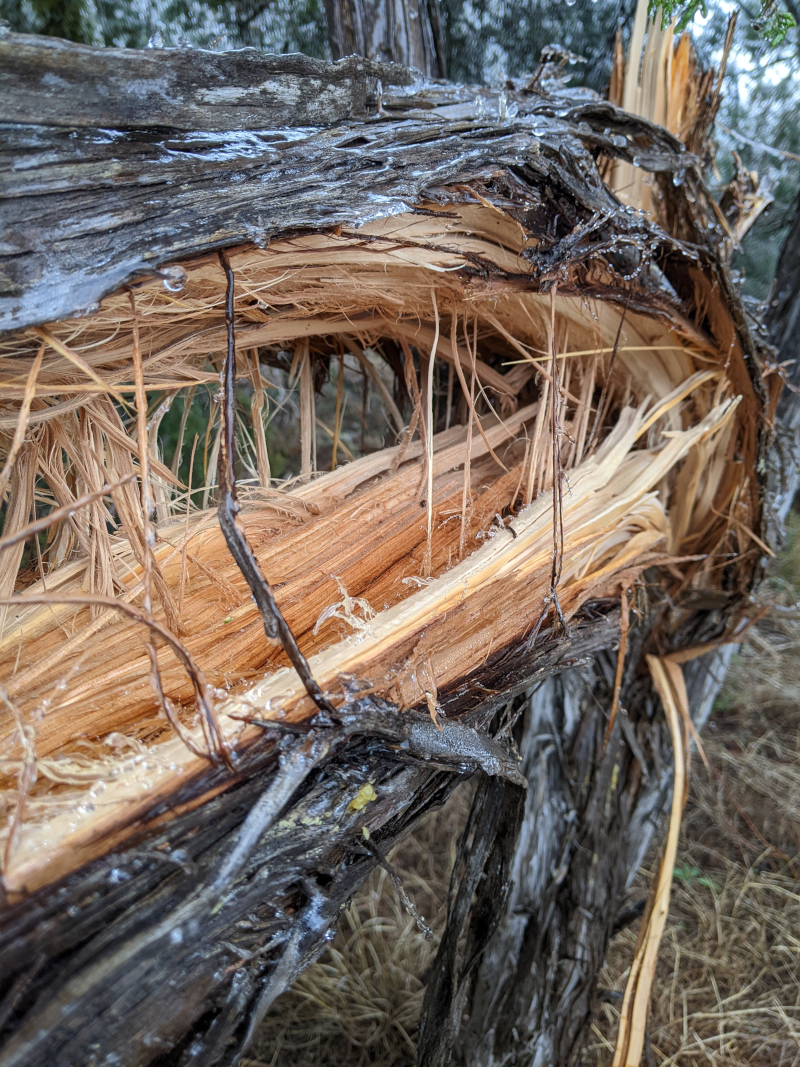
When I got home, I tried to google things along the lines of “tree with little brown cones on the tips of needles”. If it wasn’t obvious, at this point I didn’t really have a vocabulary for describing what I was looking at. Everything that came up had cones that were at least 3 times bigger than what I was looking at, and then for a moment I was convinced the tips of the needles were just dying, because I guess it’s common for leaf tips to turn brown when certain insects eat them.
Luckily I found this Trees of Texas site that helps identify Texas trees. First I learned some new vocab - this type of needle that isn’t smooth is often described as “scale-like”. Then going through their identification tool I was able to ID it pretty fast as an Ashe Juniper (Juniperus ashei).
It wasn’t until then that I realized this other picture I took of a separate tree with pale blue berries was actually a female version of the same tree!!
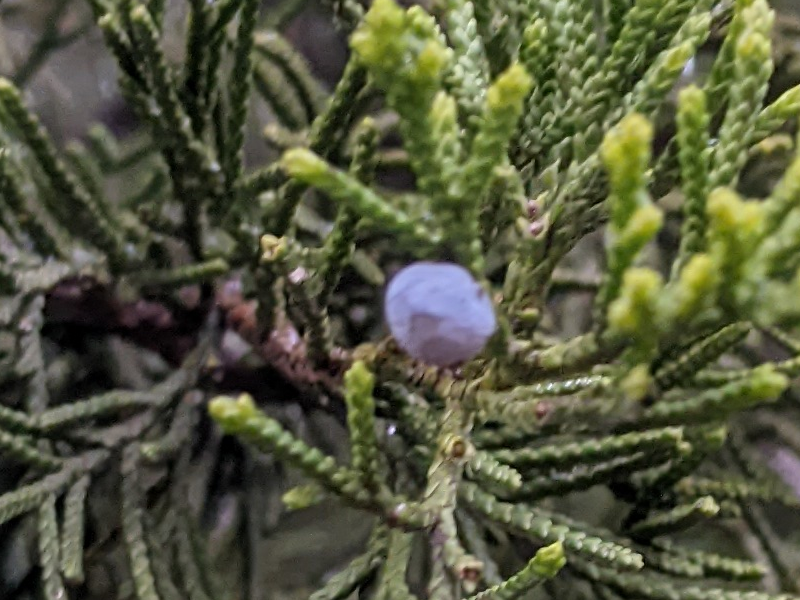
The site also described the wood as being aromatic, which I never would have known if the ice storm hadn’t ripped that one tree in half.
The Little Yellow Pumpkins

These things were growing on a single dried up stem that grew along a wooden post on the side of a road. At first I thought it might be a weird berry, but the way the top of the fruit connected to the stem reminded me of a pepper, which seemed like a better guess. Still, I wasn’t having any luck googling “tiny yellow pumpkin shaped peppers”, so I started to research different types of peppers in general.
This is when I learned that jalapeños and bell peppers were from the same species of pepper, Capsicum annuum 0_0 I assumed plants of the same species would look pretty similar, but there were a bunch of peppers in this species that looked entirely different. My 0 confidence in correctly identifying this plant was now somehow lower.
Help From Artificial Intelligence
To get some help identifying these peppers, I turned to ChatGPT. After some back and forth, it guessed that it might be a “yellow lantern chili pepper plant”, part of the species Capsicum chinense. Honestly, it doesn’t look like a 100% match, but when I google it the image results are the closest I’ve gotten so it’s currently my best guess.
To test the AI, I retroactively tried to see if it could ID the Ashe Juniper giving it the bad descriptions I was previously entering into Google. It got close but was confidently wrong. It guessed it was an Eastern Red Cedar, which makes sense since that also has scale-like leaves, tiny cones on the leaves of male trees, and blue berries on the female trees. I asked “what else could it be?” and it said Rocky Mountain Juniper. Nice try. Overall ChatGPT seems like a good resource for plant identification when you’re stuck, but I would only use it to get new ideas and wouldn’t trust it’s final result.
Bonsai Tree TORTURE
While researching plants more generally, I went down too many rabbit holes to cover in one blog post. Instead I’ll just highlight one interesting discussion regarding the ethicality of bonsai trees.
Bonsai trees are regular trees that are carefully pruned and manipulated so they look like miniature versions of full sized trees. Since their growth is stunted in a way, some people consider this to be torture for the tree. The general pushback against these people is that we already prune and manipulate most of the plants we grow, cut our grass, build things out of wood, etc.
I think what makes people feel weird is that the “suffering” is precisely what we are praising when we look at a bonsai tree, while when we look at other human manipulated plants we don’t even think about it and ignorantly appreciate its “natural” beauty. I personally don’t consider bonsai torture, but one time I heard a podcast say plants might be conscious, and I want to believe it because it’s a cool idea, so maybe I’m a hypocrite. My justification is that even if plants are conscious we don’t have any evidence that they suffer when they get pruned and have some pressure put on their limbs. I’m going to plant hell.
Closing Thoughts
While “plants” is a huge topic to cover in a week, one benefit of huge topics is how they open up so many little paths to learning about other topics. Understanding how plants grow leads to gardening/farming. Understanding how they affect the body leads to health, medicine, and biology. Then remember that plants don’t exist in a closed system, so you have to understand the environment around them. At that point you’re basically studying the whole dang Earth.
I was only able to successfully identify 5 plants, but there are a small enough number of local plants in Austin that getting familiar with them doesn’t seem like an impossible task. The natural progression seems to start with observing all the plants in your local area, and then slowly expanding beyond that. I’m not sure I’ll ever dedicate an extended period of time to studying plants like this again, but I feel like I’ve got enough of a foundation to slowly research the plants I encounter moving forward.
